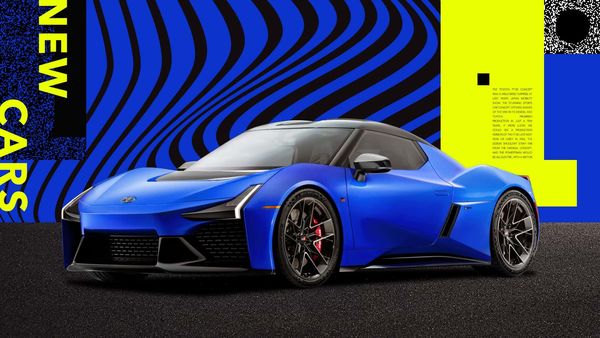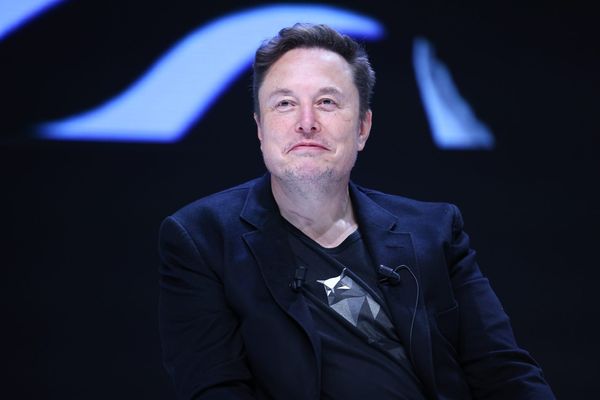
- Production versions of the Acura Performance EV Concept and Honda Saloon 0 concept will be manufactured in Ohio, alongside its existing ICE Honda Accord, Acura TLX and Acura Integra.
- The plant's first models are expected to go on sale in late 2025.
- If the EV hub works out, Honda could convert future plants to manufacture EVs in its other factories around the globe.
Honda’s future electric vehicle aspirations are nearing the end of their gestation period, and soon we’ll finally see the fruit of its $4.4 billion investment in U.S. EV manufacturing.
Last week, Honda invited us to get better acquainted with the Acura Performance EV concept and so it could explain details about its Ohio-based EV hub. After a chat with Mike Fischer, executive chief engineer and Honda’s EV Hub lead, there’s one thing for sure: The way Honda is implementing its EV production in Ohio will likely carry over to the rest of its facilities around the world.
Of course, the creation of Honda’s EV Hub isn’t new. We already know that Honda planned to convert several parts of its existing Central Ohio manufacturing facilities to produce vehicles and vehicle parts for its self-developed EVs. Until it opens, Honda's only U.S.-market EV is the Prologue, which is a rebadged version of the Chevy Blazer EV, built by General Motors.
Gallery: 2024 Honda Saloon EV Concept







We’ve also known that the production versions of the Honda Saloon 0 concept and Acura Performance EV concept would be the first two models to roll out of Honda’s EV hub. But Honda wanted the press to understand that this is a strategic shift in how the brand will justify its EVs.
Honda’s plant will make EVs, hybrids and ICE vehicles on the same line, in the same factory. It is building out its ability to build and use a semi-structural EV battery and motor (Honda calls it the IPU) that can be shared amongst its EVs, even if they’re radically different.
“Our fundamental mission with the flexibility in this….is to recognize and commonize as much as we can from it,” Fischer said when asked how Honda would be able to produce two completely different EVs on the same line. The company’s representatives insist that it was still too early to introduce any specific production details about either car, but they did explain optimization was one of its biggest goals, even amongst its ICE and hybrid models.
The ability to produce all three powertrain types at its existing factories wasn’t easy. Also, the brand did this without interrupting the production of its current models. Honda’s engine and car production in Ohio remained minimally affected while the brand added a whole new line for its EVs.
Gallery: Acura Performance EV Concept







Fischer described Honda’s work in Ohio as “EV Rails,” saying that this project is laying the groundwork for its EV manufacturing plans. For example, the production runup for a typical new production lineup would have been started roughly a year before the model officially goes on sale. Fischer says that his team is roughly 2.5 years into the project, for a car that won’t go on sale for another year.
“We started 18-plus months before a normal development team, in order for us to validate the flexibility and the ability to do that, and to allow us to make sure that that infrastructure was in place,” said Fischer. Honda wants its first long-range, U.S. market, self-developed EVs to go off without a hitch.
Fischer insists that on a lot of levels, what’s going on at Honda’s Ohio EV hub is a test run of sorts. EV startups have issues with scaling. There are high upfront costs associated with building factories and understanding the logistics of creating a car of any type, outside of engineering, marketing, or development of the vehicle itself.
Honda wants to prove that an agile model where the brand can simply add on to its existing manufacturing plants could work better than building a new plant. Fischer said that by not building an entirely new facility, Honda will be better equipped to flex its production abilities to meet its customer’s desires, whether that be EVs or its existing hybrid or ICE vehicles.
Gallery: 2024 Honda Prologue Elite







It sounds like Honda wants to stay as flexible as possible. Fischer said that Honda’s goal is to better tie customer demand directly to the manufacturing floor, and keep inventory in check.
That goal won’t even be an EV-exclusive idea. It follows Honda's long history of minimizing production complexity and inventory on the ground, a strategy that allows Honda to eschew fleet sales programs and minimize incentive programs, both of which are margin-killing strategies that automakers use to clear excess inventory.
If Honda’s EV hub goes off just right, then perhaps the brand could become a stealth EV producer, quietly (and profitably) producing as many EVs as it needs to alongside its gas-powered cars.
Production versions of the Acura Performance EV Concept and Honda Saloon 0 Concept are expected to go on sale in late 2025 and early 2025, respectively.
Contact the author: kevin.williams@insideevs.com










